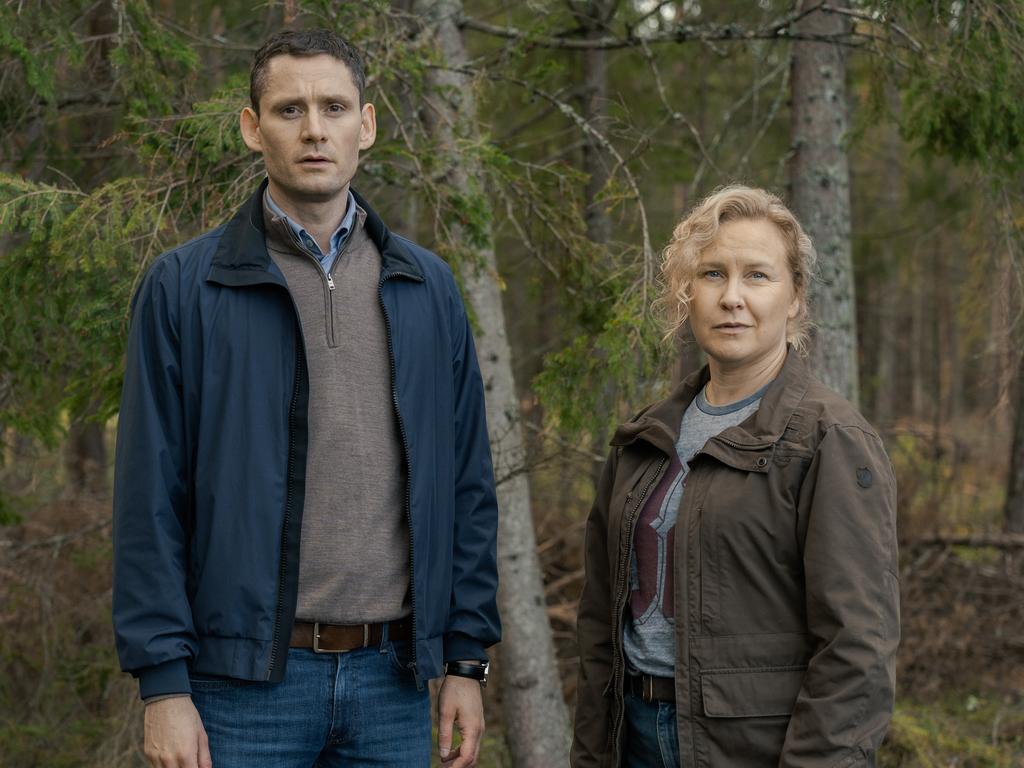How the influential women in Humphrey Bogart’s life propelled his career
Humphrey Bogart appeared in 75 movies during his legendary career from 1930 to 1957. His four wives are footnotes in history, but now they’ve stepped into the spotlight.

“Acting is a nice racket,” Humphrey Bogart says. “The words ‘movie star’ are so misused they have no meaning. The studios can make anyone a star if they get behind them. That’s why I don’t kid myself, why I can’t take myself or the business seriously.” He’s speaking at the start of the documentary film Bogart: Life Comes in Flashes, which I’ve only recently discovered, a carefully orchestrated piece of filmmaking about the magic of Hollywood that any fan of cinema can enjoy.

It’s from Irish director Kathryn Ferguson, who after a decade of short-form work released her first feature, the award-winning documentary Nothing Compares, in 2022, which reconstituted the career of singer Sinead O’Connor as a ferocious and determined artist whose iconoclastic personality led to her exile from the pop mainstream. The film was acclaimed for its stimulating guide to a brilliant individual who declined to conform, the cautionary tale of yet another disobedient female who dared to step out of line and paid the price with her career.
Ferguson’s lateral approach to biography was praised, too, the way she avoided the conventional talking heads type of documentary that follows someone’s rise to the top. She worked with sound, using the disembodied voices of people who knew O’Connor, and often the singer herself, to accompany archival footage, and occasionally invented scenes of significant events in her career.
Ferguson said O’Connor’s voice was her crucial take, “the key character that you really honed into, and that she could speak, uninterrupted, for 97 minutes – it just became almost like a conceptual part of the film”. The singer became the film’s frequent narrator, laying out her memories first-hand, recollections collected from a meticulously researched archive.
She does something similarly immersive too with Bogart, an attractively layered piece of storytelling produced in co-operation with Bogart’s estate, an official portrait but no hagiography, tracing the way not only his career evolved but also his recognisable persona. It was as if there was a kind of implicit confidence that he understood all of life’s dirty little tricks and could no longer be hurt. As he liked to say, “That’s the trouble with the world, it’s always one drink behind.”

Bogart appeared in 75 movies during his legendary career from 1930 to 1957, and Ferguson tells a kind of deceptive cradle-to-the-grave story of his life and career in his own words, of a great star who seemed to be literally dying of cancer, whiskey and cigarettes before the eyes of his admirers. As critic Andrew Sarris wrote, “It is almost as if he was quietly amused at the low-life spectacle he was making of himself.”
In the film, words attributed to Bogart are read by Kerry Shale, an actor whose voice is similar though without the trademark lisping way of speaking, which was caused by a scarred upper area of Bogart’s mouth. The film’s script, meticulously prepared by Ferguson and co-writer Eleanor Emptage after combing through countless hours of interview footage to construct their narrative, avoids the need for the snarls, growls and slurs often uttered through that fiendish grin in so many movies that characterised his distinctive approach to acting.
Shale gets the self-deprecation just right and sometimes the sense of personal gravity, one of the many things you remember after watching the film. He finds the feeling of a genuinely independent spirit, nonconformist and rebellious, and the way it flowed out of his apparent casual onscreen gestures.
“It was a humungous task in every respect,” Ferguson told IndieWire. “The archive itself was extensive, but I think a really big part of it too was trying to mine the words – getting all of the words so that we could turn them into a script and bring Bogart’s voice to life so that he can tell his own story.”
But more than this, her film is centred on Bogart’s wives and how each of them became part of, and helped evolve, the star’s mythology. All of them in their different ways gave him what he needed at the time of their marriages, whether providing comfort to the struggling journeyman actor or inspiration or ambition at different points in his career.
“I’m not at ease with women, really,” he says at one point. “I must obviously like certain women – I’ve certainly married enough of them. If you’re not married or in love, you’re on the loose, and that’s not comfortable. Love is the one emotion that can relieve, as much as is ever possible, the awful, essential loneliness of us all.”

It’s what Ferguson calls her “slightly different take”, something that fascinated her as a female filmmaker and motivated her to make something that as a woman she would want to watch. “He always had this key relationship with him throughout all of these seismic moments in his life,” she says. “So we really wanted to find out what that was about. And what became very apparent to us from researching was the key relationship was with his mother, Maud Humphrey, who at the turn of the century in 1899 when Bogart was born was one of the leading illustrators in the world, one of the most highly paid women for her work in the world and a suffragette.”
But the relationship was a cold one; Bogart’s mother, obsessed by her work, suffering from migraines, found it impossible to express affection for her son and left him to be brought up by the maids. “She was Maud, never Mother,” he says.

From Bogart’s entitled childhood spent with his emotionally distant mother, Ferguson guides us in a linear but at times dizzying journey to his death from oesophageal cancer aged 57.
She shows how he started slowly in the 1930s, having to return to Broadway to recharge his fledgling movie career; the way how, more often than not, the supporting characters he played were dead of gunshot wounds before the last reel. He observes that his frequent death kept his career alive into the 40s, when he vaulted into movie mythology with High Sierra, The Maltese Falcon and Casablanca.
Along the way there are stories of how he was witness to the insidiousness of censorship, fought in a war against fascism and engaged in a lengthy public battle against a government determined to out him as a communist.
Bogart led a shift away from the notion of the leading man with classic, lean American good looks, and ingenuous wholesome smiles with which Gary Cooper, James Stewart and Clark Gable bedazzled millions. The Bogart snarl betokened a dissatisfied, diffident cynicism, the inevitable result of recognising instinctively the shallowness of social subterfuge.
He was one of those actors who never seemed to act, but Bogart seemed to project a quality that seemed recognisable, important to millions of people. His typical costume was the trench coat, fedora and immaculate suit, his voice thick with an aggressive New York City accent, and he appeared to embody the quintessential American image of masculinity.
But as Ferguson makes clear in this fine film, Bogart would not have existed as the star he became without these strong women who shaped the evolving actor.
“You’re looking at an actor who’s made more lousy pictures than anyone in history,” he says at one point. “And I always wound up dead and never got the girl.” But in real life there were always girls. There were the four wives, footnotes in history maybe but given serious attention by Ferguson, all of them important in creating the myth of the actor.
They include respected Broadway stage performers Helen Menken, who helped him break into Broadway, and Mary Philips, a diva who also added to his professional standing.



Tempestuous Mayo Methot followed; as Bogart’s wife at the height of their mutual fame, her career was fading as alcoholism and undiagnosed schizophrenia took their toll on the relationship, and as his success raced past hers. “There’s that quote from Eric Lax who talks about Mayo and Bogart being on two escalators face-to-face when they meet, pretty much the same age, and due to the system her escalator rapidly begins to go down while his ascends, and that became something we were very interested in as women,” Ferguson says.
Their rows were so notorious they became known as “The Battling Bogarts”, Methot possessed of a particularly potent right hook that she liked to use on him. As Ferguson reveals, Bogart derived a strange energy from the compelling marital conflict. Then Bogart began a notorious love affair with Lauren Bacall while he was still married to Methot. They wed when Bacall was only 20 and Bogart was 25 years her senior, and she rejuvenated the actor as a romantic lead.

He essentially played himself with only occasional variations in every performance and he kept people interested. His quality was cynicism, a calm kind of distrust that seemed at the peak of his career to have reached a state of philosophic peacefulness. And as Ferguson suggests he couldn’t have done any of it without those dames he married.
Bogart: Life Comes in Flashes, streaming on Binge.






To join the conversation, please log in. Don't have an account? Register
Join the conversation, you are commenting as Logout